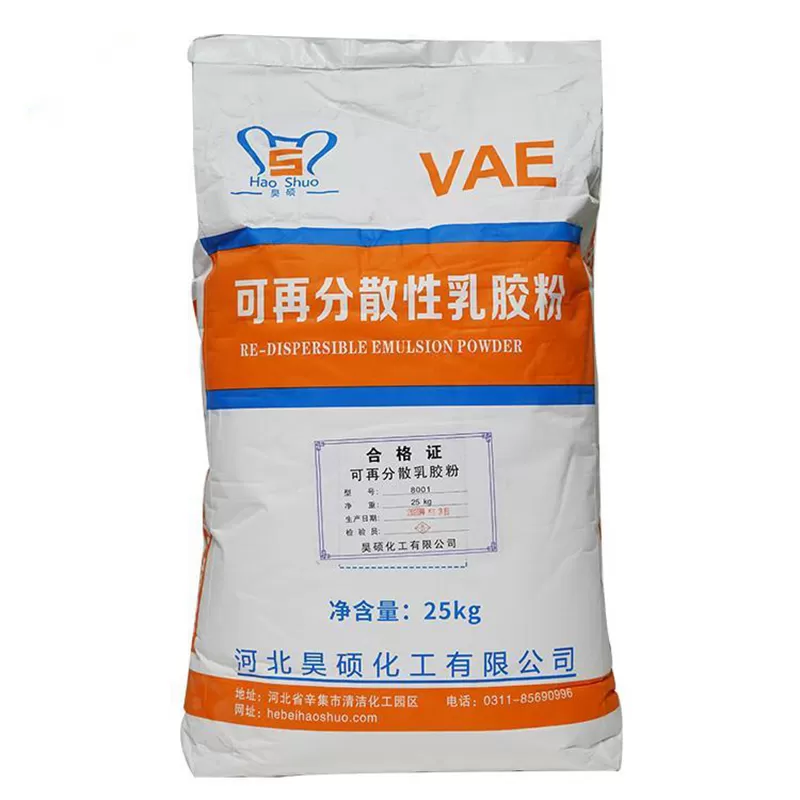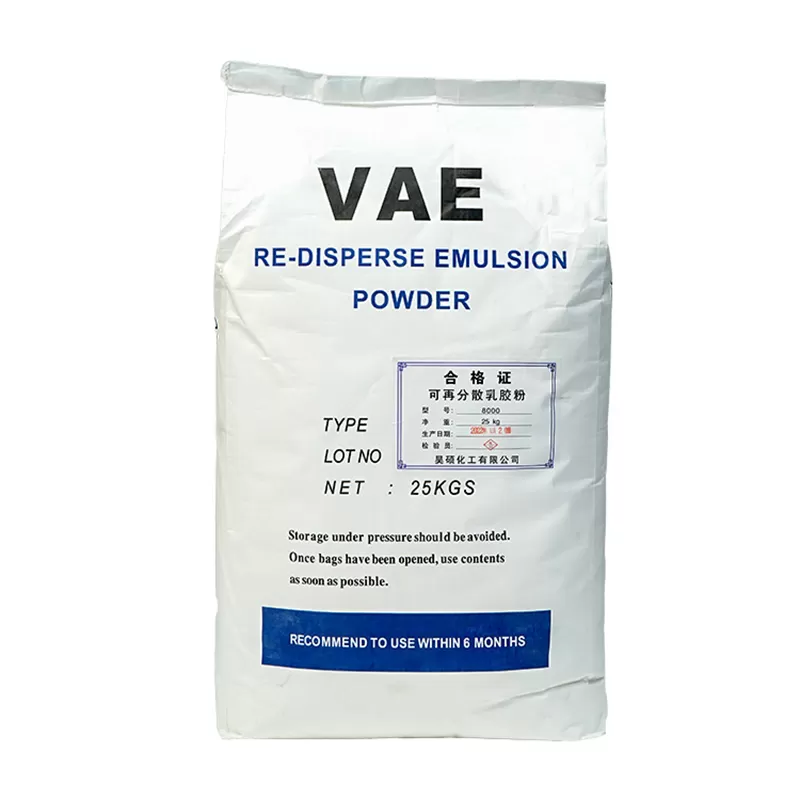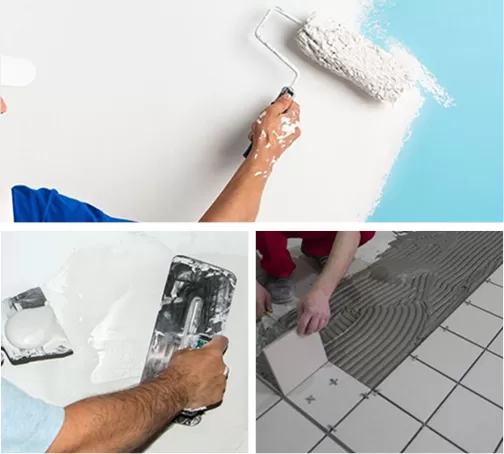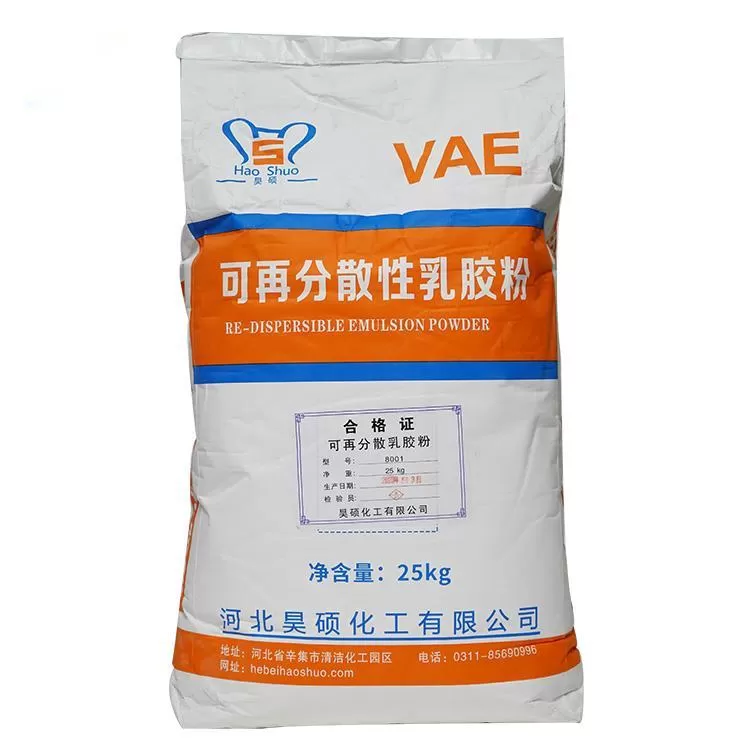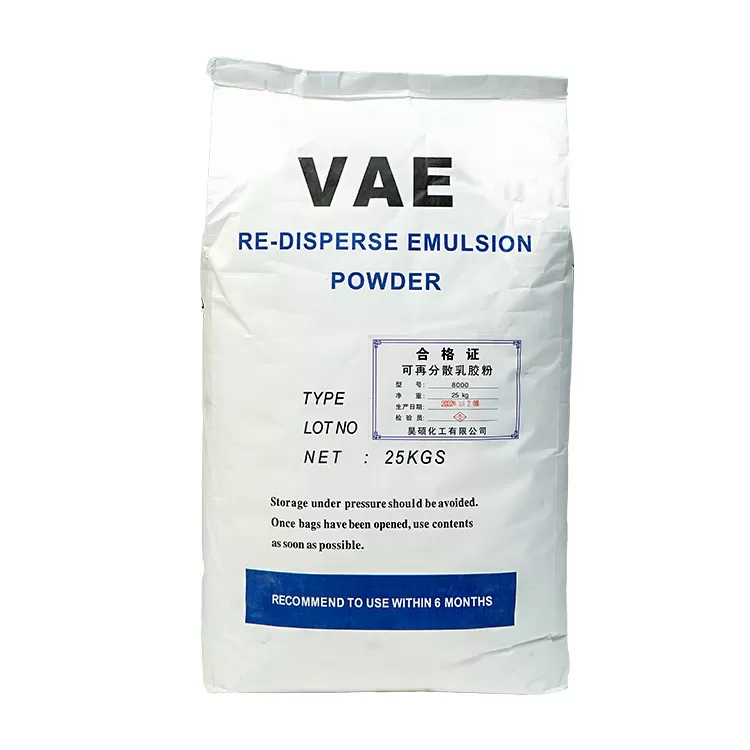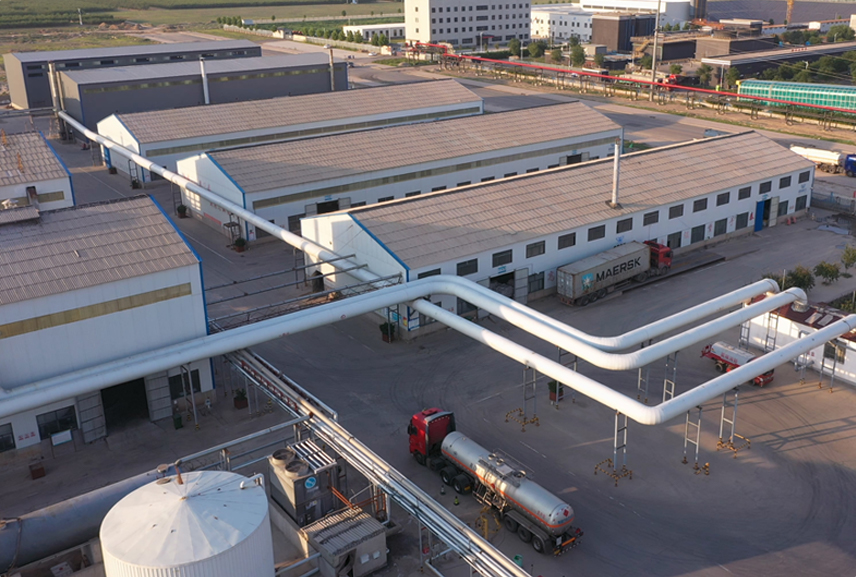Redispersible polymer powder, also known as VAE Chemical or RDP Chemical, is a powder binder made from a special emulsion (high molecular polymer) spray-dried. The VAE/RDP powder can be quickly dispersed to form an emulsion after solving into water, and has the same properties as the initial emulsion, that is, a film can be formed after the water evaporates. This film has high flexibility, high weather resistance and good adhesion to various material, is an essential functional additive for dry-mix mortar.
Effect of VAE Chemical:
Improve the performance of the mortar, increase the strength of the mortar, increase the bonding strength of the mortar with various substrates, and increase the flexibility and deformability of the mortar, and compressive strength, flexural strength, abrasion resistance, toughness, adhesion and water retention capacity and workability.
As a leading VAE Chemical supplier, Haoshuo adopts advanced production technology and equipment from Germany, has 18 production lines, with a product quality rate of 100%, daily output can be up to 200 tons at now.
Moreover, we have a strong technical organization with the capabilities to maximize the benefits of cellulose ethers in your application. We offer technical assistance to our customers in products analysis, formulation optimization etc. We also provide high performance VAE chemical and construction grade HPMC for sale with low cost price. Welcome to contact us for detailed information!

Redispersible polymer powder, also known as redispersible emulsion powder, is a powder binder made from a special emulsion (high molecular polymer) spray-dried. RDP powder can be quickly dispersed to form an emulsion after solving into water, and has the same properties as the initial emulsion, that is, a film can be formed after the water evaporates. This film has high flexibility, high weather resistance and good adhesion to various material, is an essential functional additive for dry-mix mortar.
The addition of redispersible emulsion powder to the mortar can increase the cohesion and flexibility. First, RDP polymer can improve the water retention of the mortar, form a film, and reduce the evaporation of water. Second, redispersible polymer powder can improve the bond strength of mortar.
Dispersible polymer powder production process
• Dispersible polymer powders from HaoShuo are made by first suspending polymer particles (homopolymer or copolymer) in water and then spray drying them. This produces round powder-like agglomerates with a diameter of approximately 80 to 100 μm.
• Afterwards, a mineral anti-caking agent is added to produce a dry, free-flowing, and storable polymer powder, which is then stored in bags or silos.
• During the production of cement or gypsum mortar, the dispersible polymer powder is added to the mixing water and stirred until it disperses on its own. The aggregates then disintegrate and return to their smaller original molecules.
As one of the professional redispersible polymer powder manufacturers, HaoShuo has a strong technical organization with the capabilities to maximize the benefits of cellulose ethers in your application. We provide technical assistance to our customers in products analysis, formulation optimization etc.
Our factory adopts advanced production technology and equipment from Germany, has 18 production lines, with a product quality rate of 100%, daily output can be up to 200 tons at now.
We provide high quality RDP polymer powder and construction grade HPMC for your choice. Please feel free to select your interested products and contact us for the factory supply RDP powder price!
Get factory direct price
Use effect of dispersible polymer powder
• During the production of gypsum mortar, concrete or mineral cementitious materials such as cement, RDP powder is added to mixing water and subsequently redispersed.
• VAE redispersible powders can increase the flexural tensile strength, abrasion resistance and compressive strength of the material because the polymer modification reduces the water content in the cement. The reduction in water absorption caused by the polymer dispersion also makes mortar and cement more resistant to freeze-thaw cycles.
• When added to materials, redispersible powders maximize bond tensile strength, enhance elasticity and reduce porosity.
• Dispersible polymer powder can also be used to improve the performance of sealants, caulks, fillers, wallpaper adhesives, tile adhesives and exterior paints.
• RDP powders can significantly improve the processability of materials. Adding powder prior to hydration not only reduces the amount of water required for processing, it also simplifies handling and extends the time you can use the material.
• After curing, the material will bond better to the substrate and have more flexibility. Even without the addition of plasticizers, the cohesion between the various building components is stronger.
• Redispersible polymer powders provide tile adhesives with excellent adhesion and even form strong bonds with difficult substrates such as natural stone, wood and plastics.




